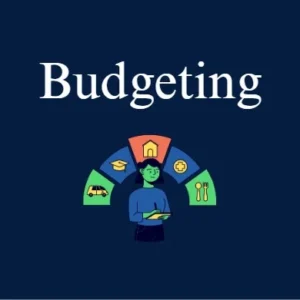Personal finance, in its essence, is a comprehensive term that encapsulates the strategies and practices individuals employ to effectively manage their financial resources. It involves a spectrum of activities, from crafting a budget and saving for the future to making informed investment decisions and navigating the complexities of debt. Essentially, it is the roadmap to financial well-being, offering guidance on how to make money work for you rather than merely existing as a means of sustenance.
The realm of personal finance is not confined to the realm of financial wizards; it is a domain accessible to everyone, irrespective of their financial acumen. It is about demystifying the language of money, empowering individuals with the knowledge and skills to make informed choices that align with their unique goals and circumstances.

Table of Contents
The Significance of Personal Finance

The importance of personal finance extends far beyond the realm of mere number crunching and spreadsheet management. It is the cornerstone of financial freedom, a concept that transcends the ability to amass wealth and extends into the realm of making intentional and meaningful choices that align with one’s values and aspirations.
At its core, personal finance is about taking control of one’s financial destiny. It empowers individuals to set and achieve financial goals, whether they be short-term aspirations like building an emergency fund or long-term objectives like securing a comfortable retirement. Through a deliberate and strategic approach to managing finances, individuals gain the freedom to make choices that resonate with their life objectives, unburdened by the constraints of financial stress.
Furthermore, personal finance serves as a shield against the uncertainties that life may throw our way. An emergency fund cultivated through prudent financial planning becomes a safety net during unforeseen circumstances, providing a sense of security and stability that transcends monetary value.
An overall summary of Key Topics Covered

As we embark on this exploration of personal finance, we traverse a landscape rich with diverse topics, each playing a crucial role in shaping our financial destinies. From the intricacies of budgeting, which serves as the foundation of financial health, to the nuances of investing wisely and strategically, the journey unfolds with a wealth of insights and practical advice.
This chapter is a holistic guide, covering the spectrum of personal finance essentials. It explores the art of setting financial goals, distinguishing between short-term needs and long-term aspirations. It delves into the art of budgeting, unraveling the secrets of creating a realistic and effective financial plan that aligns with individual income streams and lifestyles.
Moreover, we navigate the terrain of saving and investing, understanding the significance of building an emergency fund and making informed choices in the realm of investments. The chapter sheds light on the strategies for managing debt, offering insights into negotiating interest rates and finding pathways towards financial liberation.
Within these pages, we unravel the mysteries of credit management, exploring the profound impact of credit scores on financial well-being. Insurance, retirement planning, and tax considerations are also dissected, providing a comprehensive view of the multifaceted nature of personal finance.
In essence, this chapter serves as a compass, guiding individuals through the labyrinth of personal finance with practical insights and tangible strategies. It is a transformative journey that transcends the conventional boundaries of financial discourse, paving the way for individuals to not only survive but thrive in the intricate dance of financial stewardship. As we delve into the chapters that follow, we embark on a voyage toward financial empowerment, armed with knowledge that has the potential to reshape destinies and unlock the doors to a more secure and prosperous future.
Why to Set Financial Goals?

In the symphony of personal finance, the chapter on “Setting Financial Goals” emerges as a pivotal movement, orchestrating the harmonious alignment of dreams and fiscal prudence. At its core, this chapter delves into the art and science of envisioning a financial future and crafting a roadmap to transform aspirations into tangible reality.
Beyond the numbers and spreadsheets, the exploration of financial goals is a transformative journey, inviting individuals to articulate their ambitions, both short-term and long-term, and to navigate the dynamic terrain of personal finance with intention and purpose. As we step into the realm of goal-setting, we embark on a voyage that transcends traditional financial discourse, unveiling the profound impact of deliberate financial planning on the trajectory of one’s life.
Short Term Financial Goals

In the intricate tapestry of financial planning, the chapter on “Short-term Goals” unravels the threads that weave immediate financial stability and resilience. Within this realm, two crucial facets take center stage: the establishment of an Emergency Fund and the strategic pursuit of Debt Repayment.
Emergency Fund: A Financial Safeguard
An Emergency Fund, akin to a monetary safety net, stands as a fundamental pillar of short-term financial goals. It is more than a mere accumulation of funds; it embodies a shield against the unpredictable storms life may cast our way. This financial reservoir, cultivated with intention and discipline, serves as a buffer during unexpected expenses, be it a sudden medical bill, a car repair, or an unforeseen job loss.
The significance of an Emergency Fund lies not only in its financial functionality but also in the peace of mind it affords. It transforms a financial crisis from a potential catastrophe into a manageable challenge. As individuals diligently contribute to this fund, they build a fortress against the disruptions that could otherwise threaten their financial equilibrium.
The process of building an Emergency Fund involves a delicate balance between income, expenses, and savings. It requires a strategic assessment of one’s monthly obligations and a commitment to setting aside a portion of income for unforeseen circumstances. This chapter explores the nuances of cultivating such a fund, offering insights into determining the ideal amount based on individual circumstances and providing practical tips for consistent and sustainable contributions.
Debt Repayment: Liberation from Financial Shackles

Debt, an ever-present companion for many, is a hurdle that impedes financial progress. The pursuit of short-term financial goals necessitates a focused endeavor to liberate oneself from the clutches of debt. Whether it be credit card balances, student loans, or other financial obligations, a deliberate and systematic approach to debt repayment is the key to financial freedom.
The chapter on Short-term Goals delves into the intricacies of debt repayment strategies, guiding individuals through the labyrinth of interest rates, payment plans, and negotiation tactics. It advocates for a proactive stance in addressing outstanding debts, emphasizing the empowering impact of financial liberation.
Moreover, the pursuit of debt repayment is not merely a financial endeavor; it is a transformative journey that reshapes one’s relationship with money. As individuals navigate the process of reducing and eliminating debt, they gain a sense of control over their financial destinies. This chapter explores the psychological aspects of debt repayment, acknowledging the challenges and offering encouragement for the journey towards financial liberation.
In essence, the exploration of Short-term Goals is an odyssey into the immediate actions that fortify one’s financial foundation. It is a call to arms for individuals to proactively engage with their financial landscapes, to cultivate resilience through the creation of an Emergency Fund, and to embrace the transformative journey of debt repayment. As we delve into the details of short-term financial objectives, we uncover not only the practical strategies but also the profound impact these goals can have on one’s financial well-being and peace of mind.
Medium-term Financial Goals

Within the panorama of financial aspirations, the chapter on “Medium-term Goals” emerges as a narrative of ambition, encapsulating the strategic pursuit of significant milestones such as Buying a Home and Starting a Business.
Buying a Home: Foundations of Stability
The endeavor to purchase a home transcends the transactional realm of real estate; it embodies the pursuit of a sanctuary, a place to call one’s own. In the spectrum of medium-term goals, the aspiration to own a home stands as a testament to financial stability and long-term vision.
This chapter delves into the multifaceted journey of home ownership, exploring the intricate dance between savings, creditworthiness, and market dynamics. It emphasizes the importance of meticulous financial planning, from saving for a down payment to navigating the complexities of mortgages and interest rates.
Moreover, the pursuit of homeownership extends beyond the financial realm; it intertwines with personal aspirations and lifestyle choices. The chapter on Medium-term Goals invites individuals to envision their ideal living spaces, to weigh the considerations of location, size, and amenities, and to approach the process of buying a home with both financial prudence and heartfelt enthusiasm.
Starting a Business: Entrepreneurial Ventures
For those driven by entrepreneurial zeal, the medium-term goal of starting a business becomes a compelling chapter in the narrative of financial aspirations. It is a journey laden with both opportunities and challenges, demanding a confluence of vision, strategic planning, and risk-taking.
This chapter unravels the layers of entrepreneurship, from ideation to execution, offering insights into market research, business planning, and funding strategies. It underscores the significance of aligning business goals with personal values and strengths, emphasizing that a successful venture is not merely measured in financial gains but in the fulfillment of one’s entrepreneurial vision.
The pursuit of starting a business is not solely about financial investments; it is a venture into the realms of passion, innovation, and resilience. As individuals embark on the path of entrepreneurship, they navigate the uncertainties with a blend of pragmatism and creativity. This chapter acknowledges the dynamic nature of entrepreneurial pursuits, offering guidance on adaptability, marketing strategies, and sustainable growth.
In essence, the exploration of Medium-term Goals is an odyssey into the realms of stability and ambition. It encapsulates the transformative journey of buying a home, where financial prudence intertwines with personal aspirations of rootedness and sanctuary. Simultaneously, it unravels the narrative of starting a business, where the pursuit of entrepreneurial dreams unfolds against the backdrop of innovation and resilience.
As we navigate the intricacies of medium-term financial objectives, we unveil not only the practical strategies but also the profound impact these goals can have on shaping a future that harmonizes financial stability with personal fulfillment.
Long-term Financial Goals

In the symphony of financial foresight, the chapter on “Long-term Goals” unfolds as a sonnet of future planning, encapsulating the strategic pursuit of milestones such as Retirement and Children’s Education.
Retirement: Crafting the Tapestry of Golden Years
The endeavor to plan for retirement transcends the mere accumulation of funds; it is a meticulous choreography of financial independence and the crafting of a future marked by comfort and autonomy. In the realm of long-term goals, the aspiration to retire with financial security stands as a testament to foresight and a commitment to one’s well-being in the later chapters of life.
This chapter delves into the layers of retirement planning, exploring the interplay of savings, investments, and lifestyle choices. It underscores the importance of early and consistent contributions to retirement accounts, illuminating the exponential impact of compound interest over time. The pursuit of retirement is not solely a numerical endeavor; it is an invitation to envision a post-work life marked by fulfillment, leisure, and the pursuit of personal passions.
Moreover, the chapter acknowledges the evolving landscape of retirement, where individuals are redefining the concept beyond traditional narratives. It invites contemplation on lifestyle choices, healthcare considerations, and the pursuit of meaningful experiences in the golden years.
Children’s Education: Investing in Futures Unwritten
In the narrative of long-term goals, the aspiration to provide for children’s education emerges as a testament to investing in futures yet unwritten. It is a commitment to nurturing the potential of the next generation and facilitating the pursuit of knowledge and self-discovery.
This chapter unravels the layers of educational planning, exploring strategies to fund academic pursuits, from elementary education to higher studies. It emphasizes the significance of starting early, leveraging tax-advantaged accounts, and aligning educational goals with personal values and aspirations.
The pursuit of children’s education extends beyond financial provisions; it is a journey of instilling values, fostering a love for learning, and empowering the younger generation to navigate their educational paths with confidence.
Moreover, the chapter acknowledges the dynamic nature of the educational landscape, where choices range from traditional academia to vocational training and beyond. It invites contemplation on the role of education in shaping character, fostering critical thinking, and preparing individuals for a world marked by innovation and change.
In essence, the exploration of Long-term Goals is a narrative of future-building, where financial prudence intertwines with a commitment to well-being and legacy. It encapsulates the meticulous choreography of retirement planning, where individuals envision a post-work life marked by autonomy and fulfillment. Simultaneously, it unravels the narrative of children’s education, where the investment in knowledge becomes a beacon guiding the next generation toward futures rich with potential and possibilities.
As we navigate the intricacies of long-term financial objectives, we unveil not only the practical strategies but also the profound impact these goals can have on shaping a future that harmonizes financial security with meaningful legacies.
Budgeting

In the financial symphony of life, the chapter on “Budgeting” emerges as a fundamental movement, orchestrating the harmonious management of income and expenses. Far beyond a mere balance sheet, budgeting is the art of intentional financial navigation, a roadmap that guides individuals towards their aspirations and guards against the pitfalls of fiscal disarray. As we delve into the intricate landscape of budgeting, we unravel the threads of income assessment, expense tracking, and the delicate dance between needs and wants.
This chapter is not just a numerical exercise; it is an invitation to wield financial literacy as a tool for empowerment, to sculpt a future where financial well-being aligns seamlessly with personal goals and values. So, let us embark on this journey into the heart of financial planning, where the language of numbers transforms into a melody of purpose and prosperity.
Importance of Budgeting
Importance of budgeting transcends the confines of numerical calculations. It is a dynamic tool that not only manages financial resources but also molds financial behaviors, fostering a mindset of responsibility, awareness, and strategic planning. As individuals embrace the significance of budgeting, they embark on a journey towards financial empowerment, where every financial decision becomes a deliberate step towards a future of stability and prosperity.
Financial Discipline and Awareness:
- Budgeting instills financial discipline by providing a structured framework for managing income and expenses. It fosters awareness of where money is allocated, promoting responsible spending habits and informed financial decision-making.
Goal Alignment:
- Budgeting serves as a compass, aligning financial activities with personal goals. Whether saving for a dream vacation or planning for a major purchase, a well-crafted budget ensures that every financial move contributes to the realization of specific aspirations.
Emergency Preparedness:
- Budgets act as a financial safety net, creating space for the accumulation of emergency funds. This preparedness shields individuals from unforeseen expenses, providing a buffer during challenging times without disrupting overall financial stability.
Debt Management:
- Budgeting empowers individuals to tackle and manage debt effectively. By allocating resources strategically, one can prioritize debt repayment, reducing financial burdens and paving the way for a more secure financial future.
Wealth Building:
- Through prudent budgeting, individuals can channel funds into wealth-building endeavors, such as investments and savings accounts. This proactive approach facilitates the accumulation of assets over time, fostering long-term financial growth.
Expense Control:
- Budgets act as a tool for controlling and optimizing expenses. By setting spending limits for different categories, individuals can identify areas where adjustments can be made, curbing unnecessary expenditures and promoting financial efficiency.
Stress Reduction:
- A well-defined budget alleviates financial stress by providing a clear picture of one’s financial situation. Knowing where money is going and having a plan in place reduces anxiety and promotes a sense of control over one’s financial destiny.
Improved Decision-Making:
- Budgets facilitate informed decision-making by providing a comprehensive overview of financial resources and obligations. This clarity enables individuals to make financial choices aligned with their priorities and long-term objectives.
Enhanced Saving Habits:
- Budgets encourage the cultivation of disciplined saving habits. By designating specific amounts for savings within the budget, individuals create a consistent and structured approach to building financial reserves for future goals and contingencies.
Financial Accountability:
- Budgeting instils a sense of accountability in financial matters. It encourages individuals to take ownership of their spending habits, fostering a proactive mindset towards achieving financial goals and maintaining overall fiscal health.
Steps to focus on Creating a Personal Budget.

Income Assessment:
Begin the budgeting process with a comprehensive assessment of your income sources. This includes not only your primary salary but also any additional income streams, such as freelance work, rental income, or dividends. Accuracy is paramount; ensure all sources are accounted for to establish a realistic financial foundation.
Explanation:
Income assessment serves as the cornerstone of budget creation, providing a clear understanding of the financial resources available. By encompassing all income streams, individuals gain a holistic view, allowing for precise budget allocations that align with their total financial picture.
Expense Tracking:
Accurate budgeting requires a meticulous examination of expenses. Track all expenditures, from fixed monthly bills to variable and discretionary spending. Utilize tools such as expense tracking apps or financial software to streamline the process, ensuring no financial activity goes unnoticed.
Explanation:
Expense tracking unveils the true patterns of spending behavior. It illuminates areas where money is consistently allocated and exposes potential areas for adjustment. This detailed insight provides the foundation for informed decision-making and the cultivation of mindful spending habits.
Categories (Fixed vs. Variable Expenses):
Categorize expenses into fixed and variable categories. Fixed expenses, such as rent or mortgage payments, remain consistent each month. Variable expenses, like groceries or entertainment, fluctuate. Distinguishing between these categories enables a more nuanced understanding of financial obligations and discretionary spending.
Explanation:
The categorization of expenses enhances precision in budgeting. Fixed expenses provide a stable framework, while variable categories accommodate the flexibility needed for discretionary spending. This distinction aids in prioritizing financial allocations and adapting the budget to changing circumstances.
Tips for Effective Budgeting:

Set Realistic Goals:
- Establish achievable financial goals that align with your income and priorities. Realistic objectives provide motivation and create a roadmap for effective budgeting.
Prioritize Essentials:
- Ensure that essential expenses are prioritized in the budget. These include necessities like housing, utilities, and debt payments. By addressing essential needs first, the budget maintains a foundation of stability.
Build an Emergency Fund:
- Allocate a portion of your budget to building and maintaining an emergency fund. This financial safety net provides a cushion for unexpected expenses, shielding your budget from potential disruptions.
Review and Adjust Regularly:
- Regularly review your budget to assess its alignment with financial goals and current circumstances. Adjustments may be necessary as income, expenses, and financial priorities evolve over time.
Embrace Flexibility:
- Acknowledge that life is dynamic, and financial situations may change. Embrace flexibility in your budget, allowing room for adjustments without compromising overall financial stability.
Consider Long-Term Goals:
- Incorporate long-term financial goals into your budgeting strategy. Whether saving for a home, education, or retirement, aligning your budget with these objectives ensures consistent progress towards larger financial milestones.
Explanation:
Effective budgeting extends beyond numerical calculations; it is a dynamic practice rooted in strategic principles. Setting realistic goals establishes a tangible framework, while prioritizing essentials and building an emergency fund fortifies the budget’s resilience. Regular review and flexibility acknowledge the fluid nature of life, allowing the budget to adapt to changing circumstances. Additionally, the inclusion of long-term goals ensures that the budget becomes a tool for not only managing day-to-day finances but also steering towards a future of financial prosperity and fulfillment.
Understanding Saving and Investing

Welcome to the chapter that demystifies the magic of making your money work for you: “Saving and Investing.” Imagine this chapter as your financial superhero, guiding you to build a fortress for your future wealth.
Saving:
Saving is like gathering your coins in a piggy bank. It’s putting money aside for a rainy day, that unexpected car repair or a sudden craving for a beach getaway. Picture your piggy bank as your emergency fund, a cushion that shields you from life’s surprise expenses. It’s a bit like when Grandma used to tuck away a little cash for those special occasions—only now, we’re talking about your personal occasions.
Example:
Let’s say you decide to save $50 each month. After a year, you’d have $600! That’s your safety net, ready to catch you if life throws a financial curveball.
Investing:
Now, investing is like planting seeds in a garden and watching them grow into big, fruitful trees over time. It’s not about instant results; it’s about patiently letting your money grow and multiply. Think of it as sending your money to work for you, like a financial superhero out there making more money while you go about your daily life.
Example:
You decide to invest $100 in the stock market. Over time, that money grows as the companies you invested in become more successful. Eventually, your $100 might turn into $150 or more! It’s like having a small money army working for you, creating a brighter financial future.
So, buckle up as we explore the world of Saving and Investing. Whether you’re stashing away money in your piggy bank or letting it grow like a well-tended garden, these simple yet powerful concepts will set you on the path to financial success.
Steps to follow while Building an Emergency Fund Account

Purpose and Importance:
Building an emergency fund is akin to having a financial superhero in your corner—an invisible shield that guards against life’s unexpected surprises. Its purpose is simple but profound: to provide a safety net, a financial cushion when unforeseen circumstances come knocking.
An emergency fund serves as a guardian against the unexpected twists and turns that life often throws our way. Imagine it as a monetary superhero ready to swoop in when your car breaks down, your roof starts leaking, or an unexpected medical expense arises. Its importance lies in the peace of mind it offers—a sense of security knowing that you have a financial buffer, a silent ally standing between you and financial distress.
Beyond the immediate relief during emergencies, this fund is a strategic ally in your financial arsenal. It shields you from the need to rely on credit cards or loans when the unexpected occurs, preventing a snowball effect of debt. It transforms an unforeseen expense from a potential catastrophe into a manageable challenge, preserving your financial stability in the process.
Ideal Savings Amount:
Determining the ideal amount for your emergency fund involves a thoughtful balance between pragmatism and personal circumstances. While there isn’t a one-size-fits-all answer, a common rule of thumb suggests saving three to six months’ worth of living expenses.
The rationale behind this guideline is to ensure that your emergency fund is robust enough to cover your essential expenses during a period of financial disruption. It provides a safety net that spans several months, allowing you the breathing room to navigate challenges without compromising your financial stability.
Consider your monthly obligations, including rent or mortgage, utilities, groceries, and other essential bills. Multiply this by the recommended duration (three to six months) to arrive at your target savings amount. This calculation may vary based on individual factors such as job stability, industry volatility, and personal risk tolerance.
Moreover, the ideal savings amount is not etched in stone. It’s a dynamic target that may evolve with changes in your life circumstances. Factors such as job changes, family size, and overall financial goals can influence the appropriate size of your emergency fund. Regular reassessment and adjustment ensure that your financial superhero remains adequately equipped to face the challenges of your unique financial journey.
In essence, building an emergency fund is not merely a financial task; it’s a strategic move that safeguards your financial well-being. It’s a personalized superhero, ready to leap into action when life takes an unexpected turn. The purpose and importance lie in its role as a guardian, offering both financial security and peace of mind. As for the ideal savings amount, it’s a flexible target, a dynamic calculation that adapts to the nuances of your life, ensuring that your financial superhero is always ready for whatever surprises come your way.
Steps to keep in Mind while Investing

Stocks:
Stocks, or shares of ownership in a company, represent a dynamic and potentially lucrative form of investment. When you buy stocks, you essentially become a partial owner of the company. The value of your investment rises and falls with the company’s performance in the market.
Example:
Imagine you invest in TechX, a growing technology company. As TechX thrives, the value of your shares increases. Conversely, if TechX faces challenges, the value may decrease. Stocks offer the potential for high returns but come with higher volatility and risk.
Bonds:
Bonds, on the other hand, are a more conservative investment option. When you invest in bonds, you are essentially lending money to a government or corporation in exchange for periodic interest payments and the return of your initial investment when the bond matures.
Example:
Consider investing in a government bond with a 5% annual interest rate. If you invest $1,000, you receive $50 in interest annually until the bond matures, at which point you get back your initial $1,000. Bonds provide a more stable income stream but typically offer lower returns compared to stocks.
Mutual Funds:
Mutual funds pool money from multiple investors to invest in a diversified portfolio of stocks, bonds, or other securities. This type of investment provides instant diversification, allowing investors to spread their money across various assets without the need to manage individual investments.
Example:
Investing in a mutual fund like “Global Growth Fund” means your money is spread across various companies and industries worldwide. This diversification helps mitigate the risk associated with individual stock fluctuations, providing a balanced approach to investing.
Risk Tolerance:
Understanding your risk tolerance is crucial when navigating the investment landscape. It refers to your ability and willingness to endure fluctuations in the value of your investments. Investors with higher risk tolerance may lean towards stocks for potential higher returns, while those with lower risk tolerance may prefer the stability of bonds.
Example:
If you have a high risk tolerance, you might invest more heavily in stocks, knowing that their value can fluctuate widely. If your risk tolerance is lower, you may opt for a more conservative approach, such as bonds or other fixed-income investments, to minimize the impact of market volatility.
Diversification:
Diversification is a key strategy to manage risk in your investment portfolio. Instead of putting all your eggs in one basket, diversification involves spreading your investments across various asset classes, industries, and geographic regions. This helps reduce the impact of a poor-performing investment on your overall portfolio.
Example:
Suppose you have $10,000 to invest. Instead of putting it all in one stock, you diversify by investing in stocks from different sectors, bonds with varying maturities, and perhaps a mutual fund for broader exposure. This way, even if one investment performs poorly, the impact on your entire portfolio is minimized.
In the realm of investments, stocks offer the potential for high returns but come with higher volatility. Bonds provide stability with regular interest payments but typically offer lower returns. Mutual funds offer diversification without the need for managing individual investments.
Understanding your risk tolerance is key; higher risk tolerance may lead to more stock-heavy portfolios, while lower risk tolerance may favor stability with bonds. Diversification is a strategic approach that spreads investments across various assets to mitigate risk. By exploring these investment types and understanding their dynamics, you can craft a well-balanced investment portfolio tailored to your financial goals and risk preferences.
Understanding Different Types of Debt:

1. Credit Card Debt:
Credit card debt is perhaps the most common form of consumer debt. It occurs when individuals use credit cards to make purchases and carry a balance beyond the billing cycle, incurring interest charges. The convenience of plastic can lead to high-interest debt if not managed responsibly.
Example:
Imagine you use your credit card to buy a new laptop for $1,000, but you only pay the minimum amount due each month. Over time, the outstanding balance accumulates, and the high-interest rates can turn that initial $1,000 purchase into a much larger debt.
2. Student Loans:
Student loans are loans designed to assist individuals in funding their education. These loans typically have lower interest rates and offer deferred repayment until after graduation. However, they can still accumulate interest over time, adding to the overall cost of education.
Example:
You take out a student loan to cover your college tuition. After graduation, you’re required to start repaying the loan with interest. The total amount paid back includes not only the borrowed sum but also the accrued interest.
3. Mortgage Debt:
Mortgage debt is incurred when individuals borrow money to purchase a home. This type of debt is usually considered “good” debt, as it involves investing in an appreciating asset—real estate. Mortgage terms can vary, affecting the overall cost of homeownership.
Example:
You secure a mortgage to buy a house for $200,000. Over the next 30 years, you make monthly payments, which include both principal and interest. By the end of the mortgage term, you not only own the house but also have invested in an asset that may appreciate over time.
4. Auto Loans:
Auto loans involve borrowing money to purchase a vehicle. These loans come with interest, and the terms can vary based on factors such as the borrower’s credit score and the down payment made at the time of purchase.
Example:
You take out an auto loan to buy a car worth $30,000. The loan has a 5% interest rate, and you agree to pay it back over five years. By the end of the loan term, you’ve paid not only the initial $30,000 but also an additional amount in interest.
5. Personal Loans:
Personal loans are unsecured loans not tied to a specific purpose like a home or car. They often have higher interest rates because they lack collateral. People may use personal loans for various reasons, such as debt consolidation, home improvements, or unexpected expenses.
Example:
You take out a personal loan of $10,000 to cover medical expenses. Without collateral, the interest rate is higher compared to secured loans. Repayment is typically in fixed monthly installments over a specified term.
6. Payday Loans:
Payday loans are short-term, high-interest loans designed to cover immediate financial needs until the borrower’s next paycheck. They often come with exorbitant interest rates, trapping individuals in a cycle of debt if not repaid promptly.
Example:
You take out a payday loan of $500 to cover an urgent expense. The loan is due on your next payday, but the high-interest rate makes it challenging to repay. As a result, you find yourself taking out another payday loan to cover the initial debt, leading to a cycle of financial strain.
7. Medical Debt:
Medical debt arises when individuals cannot cover the costs of healthcare services or treatments. Despite its necessity, medical debt can become burdensome, especially if unexpected medical issues arise.
Example:
You undergo a necessary surgery that your insurance doesn’t fully cover. Unable to pay the entire medical bill upfront, you enter into a payment plan. The accrued interest or late fees can contribute to the overall burden of medical debt.
Understanding different types of debt is the first step towards effective debt management. Whether it’s credit card debt, student loans, mortgages, or other forms of borrowing, each type comes with its own implications and considerations. By recognizing the nuances of each debt category, individuals can make informed decisions, develop targeted repayment strategies, and ultimately work towards achieving financial freedom.
Here are the Best Strategies for Debt Repayment:

1. Debt Snowball Method:
The debt snowball method involves tackling debts from smallest to largest, regardless of interest rates. Start by paying off the smallest debt while making minimum payments on others. Once the smallest debt is cleared, roll that payment into the next smallest debt. This creates a snowball effect, accelerating debt repayment.
Example:
You have three debts: $500 credit card debt, $1,000 personal loan, and $2,000 medical debt. Begin by paying off the $500 credit card debt first. Once cleared, take the $50 minimum payment and add it to the $100 minimum payment for the personal loan, creating a $150 payment toward the next debt.
2. Debt Avalanche Method:
The debt avalanche method prioritizes debts with the highest interest rates. Start by paying off the debt with the highest interest rate, followed by the next highest. This method minimizes the overall interest paid and accelerates the repayment process.
Example:
You have two debts: a $5,000 credit card debt with a 20% interest rate and a $10,000 student loan with a 7% interest rate. Begin by paying off the credit card debt with the higher interest rate. Once cleared, shift focus to the student loan, saving money on interest in the long run.
3. Debt Consolidation:
Debt consolidation involves combining multiple debts into a single loan, often with a lower interest rate. This simplifies repayment by consolidating various payments into one, potentially reducing monthly payments and the overall cost of debt.
Example:
You have three credit cards with varying interest rates. Instead of managing multiple payments, you take out a debt consolidation loan with a lower interest rate to pay off all credit cards. Now, you make a single monthly payment towards the consolidation loan.
4. Balance Transfer:
Balance transfer involves moving high-interest credit card debt to a card with a lower or zero-interest introductory rate. This allows individuals to save on interest and focus on paying down the principal.
Example:
You have a $3,000 credit card debt with a 20% interest rate. You transfer the balance to a new card with a 0% interest rate for the first 12 months. During this period, you can aggressively pay down the debt without accumulating additional interest.
5. Negotiating with Creditors:
Negotiating with creditors involves reaching out to lenders to discuss more favorable repayment terms. This may include lower interest rates, extended repayment periods, or settling for a reduced lump-sum payment.
Example:
You’re struggling to meet the minimum payments on a personal loan. You negotiate with the lender for a temporary reduction in interest rates or a revised payment plan, making it more manageable during a financially challenging period.
6. Snowflake Method:
The snowflake method involves making small, additional payments towards debts whenever possible. Rather than waiting for a lump sum, every extra dollar—like a snowflake—contributes to reducing the overall debt.
Example:
You budgeted $50 for entertainment but spent only $45. Instead of letting the $5 go unaccounted for, you allocate it towards your debt. These small, additional payments, when consistently applied, contribute to faster debt repayment.
7. Increasing Income:
Increasing income involves finding additional sources of revenue to accelerate debt repayment. This may include a part-time job, freelance work, or selling unused items.
Example:
You work a full-time job but decide to take on a part-time gig over the weekends. The additional income earned from the part-time job is dedicated entirely to debt repayment, significantly speeding up the process.
8. Creating a Strict Budget:
Creating a strict budget involves meticulously tracking income and expenses, cutting unnecessary spending, and allocating more funds towards debt repayment. A disciplined budget ensures that every dollar has a purpose.
Example:
You analyze your monthly expenses and identify areas where you can cut back, such as dining out or subscription services. By reallocating those funds towards debt repayment, you create a more aggressive repayment plan.
9. Seeking Professional Help:
Seeking professional help involves consulting with financial advisors or credit counselors. They provide personalized guidance, negotiate with creditors on your behalf, and offer strategies to efficiently manage and repay debt.
Example:
You’re overwhelmed by multiple debts and uncertain about the best strategy. You consult with a credit counselor who reviews your financial situation, creates a tailored plan, and negotiates with creditors to establish more favorable terms.
10. Windfall Allocation:
Windfall allocation involves dedicating unexpected financial windfalls, such as tax refunds or work bonuses, towards debt repayment. Using unexpected funds strategically accelerates debt reduction.
Example:
You receive a tax refund of $1,500. Instead of using it for discretionary spending, you allocate the entire amount towards your outstanding debts, making a significant dent in the overall balance.
These debt repayment strategies offer a diverse toolkit to individuals seeking financial freedom. Whether utilizing the momentum of the debt snowball, the efficiency of debt consolidation, or the discipline of a strict budget, choosing the right strategy depends on individual circumstances and goals. By understanding and applying these strategies, individuals can navigate the path to debt freedom with confidence and determination.
Follow these Steps to Improve your Credit score:

Importance of Credit Score:
Your credit score is like a financial report card that lenders use to assess your creditworthiness. It plays a crucial role in various aspects of your financial life, influencing your ability to secure loans, rent an apartment, or even get a favorable insurance rate. A good credit score is a passport to financial opportunities, providing access to better terms and lower interest rates.
Example:
Imagine you’re looking to buy a home. A high credit score could mean qualifying for a mortgage with a lower interest rate, potentially saving you thousands of dollars over the life of the loan compared to someone with a lower credit score.
How Credit Scores are Calculated:
Credit scores are typically calculated based on several key factors, each carrying a different weight:
- Payment History (35%): Your track record of paying bills on time is a significant factor. Late payments or defaults negatively impact your score.
- Credit Utilization (30%): This measures the ratio of your credit card balances to your credit limits. Keeping this ratio low is favorable for your credit score.
- Length of Credit History (15%): The longer your credit history, the better. It considers the age of your oldest and newest credit accounts.
- Types of Credit Used (10%): Having a mix of credit types, such as credit cards, loans, and a mortgage, can positively impact your score.
- New Credit (10%): Opening multiple new credit accounts in a short period may be seen as risky behavior and can lower your score.
Example:
If you consistently pay your bills on time, keep your credit card balances low, have a diverse mix of credit types, and maintain a good credit history over the years, your credit score is likely to be higher.
Tips for Improving and Maintaining a Good Credit Score:

Pay Bills on Time:
Consistently paying bills on time is the most influential factor in maintaining a good credit score. Late payments, even by a few days, can have a significant negative impact.
Example:
- Set up automatic payments or reminders for due dates to ensure bills are paid on time. This simple habit can have a substantial positive effect on your credit score.
Manage Credit Utilization:
Keep your credit card balances low in relation to your credit limits. High credit utilization can signal financial stress and negatively impact your credit score.
Example:
- If your credit limit is $5,000, try to keep your balance below $1,500. This not only helps your credit score but also demonstrates responsible credit management.
Establish a Diverse Credit Mix:
Having a mix of credit types, such as credit cards, installment loans, and a mortgage, can positively impact your credit score. It showcases your ability to manage various financial responsibilities.
Example:
- If you’ve primarily used credit cards, consider diversifying by taking out a small installment loan or financing a purchase through a store credit account.
Avoid Opening Too Many New Accounts:
Opening multiple new credit accounts in a short period can be viewed as risky behavior. Each credit inquiry can have a small impact on your score.
Example:
- Instead of opening multiple new credit cards in a short period, be strategic about new credit applications and space them out to minimize the impact on your credit score.
Monitor Your Credit Report:
Regularly check your credit report for errors or unauthorized activities. Discrepancies can harm your credit score, so it’s essential to address any issues promptly.
Example:
- Use free credit report services or credit monitoring apps to keep a close eye on your credit report. If you notice any inaccuracies, dispute them with the credit bureau.
Negotiate with Creditors:
If you’re facing financial challenges, consider negotiating with creditors for more favorable terms. They may be willing to adjust payment plans or interest rates to help you manage your debt responsibly.
Example:
- Contact your credit card issuer if you’re struggling to make payments. They may offer a temporary reduction in interest rates or work with you to create a more manageable repayment plan.
Be Mindful of Closing Credit Accounts:
Closing old credit accounts can shorten your credit history and potentially lower your credit score. If possible, keep older accounts open, even if you’re not actively using them.
Example:
- Instead of closing an old credit card you no longer use, consider making a small purchase occasionally and paying it off to keep the account active and maintain a longer credit history.
In conclusion, understanding the importance of your credit score is the first step towards effective credit management. Knowing how credit scores are calculated empowers you to make informed financial decisions. By implementing tips for improvement and maintenance, you can not only boost your credit score but also pave the way for better financial opportunities and stability.
Know about Insurance, its types, and which one you should choose.

Types of Insurance (Health, Life, Property):
Health Insurance:
Health insurance provides coverage for medical expenses, offering financial protection against the high costs of healthcare. It typically includes coverage for hospital stays, doctor visits, prescription medications, and preventive care.
Example:
- Imagine you have health insurance, and you need to undergo a surgical procedure. With insurance coverage, a significant portion of the medical expenses is paid by the insurance company, reducing the financial burden on you.
Life Insurance:
Life insurance provides a financial safety net for your loved ones in the event of your death. It pays out a lump sum or periodic payments to beneficiaries, helping them cover living expenses, debts, or other financial obligations.
Example:
- You purchase a life insurance policy, and unfortunately, you pass away. The life insurance payout ensures that your family can continue to cover mortgage payments, education costs, and other daily expenses without facing financial hardship.
Property Insurance:
Property insurance protects against damage or loss of physical property, including homes, vehicles, and personal belongings. It provides financial compensation to repair or replace damaged property due to covered events like fires, theft, or natural disasters.
Example:
- A severe storm damages your home, causing roof and water damage. With property insurance, the costs of repairing the roof and restoring the interior are covered, allowing you to rebuild without bearing the entire financial burden.
Importance of Insurance Coverage:
Financial Protection:
Insurance provides a safety net, offering financial protection against unexpected and potentially devastating events. It ensures that individuals and families do not face crippling financial consequences in times of crisis.
Example:
- Without health insurance, a major medical emergency could result in overwhelming medical bills. With insurance coverage, the financial impact is significantly reduced, allowing individuals to focus on recovery rather than financial distress.
Risk Mitigation:
Insurance helps mitigate risks by spreading the financial impact of potential losses across a larger pool of policyholders. This shared responsibility ensures that no single individual bears the full burden of a catastrophic event.
Example:
- In a community with property insurance, if one homeowner’s house is damaged in a fire, the financial burden is shared among all policyholders through the insurance pool, reducing the individual’s financial strain.
Peace of Mind:
Knowing that insurance coverage is in place provides peace of mind. It allows individuals to navigate life’s uncertainties with confidence, knowing that they have a financial safety net to rely on when needed.
Example:
- A family with life insurance coverage experiences a sense of security, knowing that if the primary breadwinner passes away, the insurance payout will provide financial support for the surviving family members.
Legal Requirements:
In some cases, insurance coverage is a legal requirement. For example, auto insurance is mandatory in many places. Having the necessary insurance policies ensures compliance with legal regulations.
Example:
- When purchasing a car, it is a legal requirement to have auto insurance. This coverage not only protects the driver but also ensures adherence to legal mandates.
How to Choose the Right Insurance Policies:

Assess Your Needs:
Evaluate your specific needs and circumstances. Consider factors such as your health, financial responsibilities, and assets. This assessment guides the selection of insurance policies that provide adequate coverage.
Example:
- If you have dependents and significant financial obligations, life insurance becomes crucial to ensure that your loved ones are financially protected in the event of your death.
Understand Policy Coverage:
Thoroughly understand the coverage offered by each insurance policy. Pay attention to the terms, conditions, and exclusions. Ensure that the policy aligns with your needs and provides comprehensive coverage.
Example:
- When choosing health insurance, carefully review the coverage for hospital stays, prescription medications, and preventive care. Understanding these details ensures that you are adequately covered for your healthcare needs.
Consider Affordability:
Assess the affordability of insurance premiums. Balancing the cost of insurance with your budget is essential. Choose policies that provide the necessary coverage without straining your financial resources.
Example:
- If you are on a tight budget, explore health insurance plans with reasonable premiums that still offer essential coverage for routine medical expenses and unforeseen emergencies.
Compare Quotes:
Obtain quotes from multiple insurance providers to compare costs and coverage. This allows you to make an informed decision and choose policies that offer the best value for your specific needs.
Example:
- Before purchasing auto insurance, obtain quotes from different insurance companies. Compare the costs, deductibles, and coverage limits to select the policy that aligns with your budget and requirements.
Seek Professional Advice:
Consult with insurance professionals or financial advisors. Their expertise can help you navigate the complexities of insurance policies, ensuring that you make well-informed decisions based on your unique circumstances.
Example:
- When considering complex insurance products like life insurance with investment components, seeking advice from a financial advisor can provide insights into the long-term financial implications and benefits.
Review and Update Regularly:
Periodically review your insurance coverage to ensure it remains aligned with your evolving needs. Life changes, such as marriage, parenthood, or home ownership, may necessitate adjustments to your insurance portfolio.
Example:
- After purchasing a home, review your property insurance to account for the increased value of your assets. Adjust coverage limits to adequately protect your investment in case of property damage or loss.
Choosing the right insurance policies involves a thoughtful evaluation of your needs, a clear understanding of policy coverage, and a balance between affordability and comprehensive protection. Insurance serves as a critical financial tool, offering peace of mind, risk mitigation, and legal compliance. By making informed decisions and regularly reviewing your coverage, you can navigate life’s uncertainties with confidence and financial security.
Understand the Importance of Retirement planning and Choose Best Retirement Plan for Yourself

Retirement planning is not just a financial task; it’s a roadmap to ensure a comfortable and secure future. Understanding its importance is crucial for navigating the golden years with financial confidence.
Example:
Imagine you’re approaching retirement age without a plan. Without sufficient savings, you may find yourself relying solely on Social Security, struggling to cover basic living expenses and healthcare costs. Effective retirement planning ensures you have the financial resources to enjoy your retirement years.
Different Retirement Accounts (401(k), IRA):
401(k):
A 401(k) is an employer-sponsored retirement savings plan that allows employees to contribute a portion of their pre-tax income to a dedicated account. Employers may match contributions, providing an additional boost to retirement savings.
Example:
- You work for a company that offers a 401(k) plan. You decide to contribute 5% of your salary, and your employer matches that amount. Over the years, your 401(k) grows with contributions and potential investment returns, creating a substantial retirement nest egg.
IRA (Individual Retirement Account):
An IRA is a retirement savings account that individuals can set up independently. It offers tax advantages, with contributions potentially being tax-deductible. IRAs come in various forms, including Traditional IRAs and Roth IRAs, each with its own tax implications.
Example:
- You open a Roth IRA and contribute after-tax income. As your investments within the Roth IRA grow over time, withdrawals in retirement are tax-free. This tax advantage can significantly enhance your retirement income.
Strategies for a Comfortable Retirement:

Start Early:
The power of compounding works best when time is on your side. Starting to save for retirement early allows your investments to grow over an extended period, increasing the overall value of your retirement portfolio.
Example:
- You start contributing to your 401(k) in your 20s. Over the next few decades, your contributions, combined with investment returns, accumulate substantially. By the time you retire, you have a sizable retirement fund.
Maximize Employer Contributions:
If your employer offers a matching contribution to your retirement account, strive to contribute enough to receive the maximum match. This is essentially free money that can significantly boost your retirement savings.
Example:
- Your employer matches your 401(k) contributions up to 5% of your salary. To maximize this benefit, you contribute at least 5%, ensuring you receive the full employer match. This additional contribution accelerates the growth of your retirement fund.
Diversify Investments:
Diversification involves spreading your investments across different asset classes to manage risk. A well-diversified portfolio can provide more stable returns and protect against the volatility of individual investments.
Example:
- Instead of investing all your retirement savings in one stock, you diversify by allocating funds to stocks, bonds, and other investment vehicles. This strategy helps balance potential gains and losses, creating a more resilient portfolio.
Regularly Review and Adjust:
Regularly review your retirement plan to ensure it aligns with your financial goals. As life circumstances change, adjust your contributions, investment allocations, and overall strategy to stay on track.
Example:
- After a job promotion, you decide to increase your 401(k) contributions. Regularly reviewing and adjusting your retirement plan ensures that it remains in sync with your evolving financial situation and goals.
Consider Downsizing:
As retirement approaches, consider downsizing your living arrangements. This could involve moving to a smaller home or a more cost-effective location. Downsizing can free up funds for retirement and reduce ongoing expenses.
Example:
- You decide to sell your large family home and move into a smaller, more manageable property. The proceeds from the sale contribute to your retirement savings, and the reduced living expenses create a more financially sustainable retirement.
Delay Social Security Benefits:
Delaying Social Security benefits beyond the minimum age can result in higher monthly payouts. While you can start claiming benefits at age 62, waiting until full retirement age or beyond increases the monthly benefit amount.
Example:
- Your full retirement age for Social Security is 66, but you decide to wait until 70 to start receiving benefits. By delaying, your monthly benefit increases, providing a more substantial income stream in your later years.
Create a Sustainable Withdrawal Strategy:
Develop a thoughtful strategy for withdrawing funds in retirement. Consider factors such as required minimum distributions (RMDs) and how to balance your income needs with the longevity of your retirement savings.
Example:
- You retire with a substantial IRA. Instead of withdrawing large sums immediately, you create a withdrawal plan that balances your income needs while ensuring the longevity of your retirement savings, allowing for a more comfortable retirement.
Retirement planning is a lifelong journey, and strategic choices made today can shape the quality of life in your golden years. Starting early, maximizing employer contributions, diversifying investments, and adapting your plan as life unfolds are key strategies for building a comfortable retirement nest egg. By incorporating these principles into your retirement planning, you can embark on a fulfilling and financially secure post-work life.
Lets Understand Taxation and Its Importance

Income Tax:
Income tax is a tax imposed on an individual’s earnings. Understanding your taxable income and the applicable tax brackets is essential for effective tax planning.
Example:
- If your annual income falls within a specific tax bracket, knowing the corresponding tax rate allows you to calculate and plan for your income tax liability.
Capital Gains Tax:
Capital gains tax applies to the profit from the sale of assets like stocks or real estate. Different rates may apply to short-term and long-term capital gains.
Example:
- You sell stocks for a profit after holding them for more than a year. Understanding the long-term capital gains tax rate helps you estimate the tax impact on your investment gains.
Estate Tax:
Estate tax is levied on the value of an individual’s estate upon their death. Understanding estate tax thresholds and exemptions is crucial for estate planning.
Example:
- If the total value of your estate exceeds the applicable exemption, estate tax will be assessed on the excess amount. Proper planning can help minimize the impact of estate taxes on your heirs.
Deductions and Credits:
Deductions:
Deductions reduce your taxable income, potentially lowering your overall tax liability. Common deductions include those for mortgage interest, student loan interest, and medical expenses.
Example:
- You contribute to a qualified retirement account, and the contributions are deductible from your taxable income. This reduces your taxable income, resulting in lower income tax.
Tax Credits:
Tax credits directly reduce your tax liability, providing a dollar-for-dollar reduction. Examples include the Child Tax Credit, Earned Income Tax Credit, and Education Credits.
Example:
- You qualify for the Child Tax Credit due to having dependent children. This credit directly reduces your tax bill, providing financial relief based on the number of qualifying children.
Tax-efficient Investing Strategies:
Tax-deferred Accounts:
Invest in tax-deferred accounts like 401(k)s or Traditional IRAs. Contributions are made with pre-tax dollars, reducing your taxable income for the year. Taxes are deferred until withdrawals are made in retirement.
Example:
- You contribute $5,000 to your 401(k). This contribution is deducted from your taxable income for the year, reducing the amount subject to income tax. The investment grows tax-deferred until retirement.
Tax-efficient Fund Selection:
Choose tax-efficient investment funds that minimize capital gains distributions. Index funds and tax-managed funds are designed to be tax-efficient, reducing the tax impact on your investment gains.
Example:
- Instead of investing in actively managed funds with frequent buying and selling, you opt for an index fund. This strategy aims to minimize capital gains distributions, reducing your taxable income.
Tax-loss Harvesting:
Offset capital gains by strategically selling investments that have incurred losses. This allows you to use the losses to offset gains and potentially reduce your overall tax liability.
Example:
- You have an investment that has experienced a loss. By selling this investment strategically, you can use the loss to offset capital gains in other parts of your portfolio, reducing your taxable income.
Roth IRA Contributions:
Contribute to a Roth IRA, where qualified withdrawals are tax-free. While contributions are made with after-tax dollars, the growth and withdrawals are tax-free.
Example:
- You contribute $6,000 to your Roth IRA with after-tax dollars. Over the years, the investment grows, and when you withdraw the funds in retirement, the entire amount is tax-free.
Tax-efficient Withdrawal Strategies:
Plan your withdrawals strategically in retirement to minimize the tax impact. This may involve a combination of taxable, tax-deferred, and tax-free sources.
Example:
- In retirement, you have funds in taxable accounts, tax-deferred accounts like a 401(k), and tax-free accounts like a Roth IRA. By strategically withdrawing from each source, you can manage your tax liability.
529 College Savings Plans:
Contribute to a 529 plan for education savings. While contributions are not federally tax-deductible, qualified withdrawals for educational expenses are tax-free.
Example:
- You contribute to a 529 plan to save for your child’s college education. When the time comes to pay for qualified educational expenses, withdrawals from the 529 plan are tax-free.
Charitable Contributions:
Make strategic charitable contributions to reduce taxable income. Donations to qualified charitable organizations may be deductible, lowering your overall tax liability.
Example:
- You donate $1,000 to a qualified charity. This contribution is deductible from your taxable income, providing both financial support to the charity and a reduction in your tax bill.
Tax planning is a dynamic process that involves understanding different types of taxes, utilizing deductions and credits, and implementing tax-efficient investing strategies. By incorporating these elements into your financial plan, you can optimize your tax situation, reduce your overall tax liability, and enhance your financial well-being.
Summary:

In the journey of personal finance, various aspects play a pivotal role in shaping a secure and prosperous financial future. Let’s delve into the key points discussed in chapters focusing on personal finance, retirement planning, insurance, and tax planning.
Personal Finance:
The exploration of personal finance begins with a comprehensive understanding of its definition, emphasizing its role as the management of an individual’s financial resources. This entails making informed decisions about earning, spending, saving, and investing. The importance of personal finance is underscored by its impact on one’s overall financial well-being and the ability to achieve financial goals.
An essential foundation in personal finance is budgeting, a strategic tool that empowers individuals to allocate income wisely, prioritize expenses, and save for future goals. The budgeting process involves tracking income, categorizing expenses, and creating a roadmap for financial success. The chapter unfolds with a detailed exploration of the components of a budget, including fixed and variable expenses, emergency funds, and the allocation of funds for short, medium, and long-term goals.
Retirement Planning:
Retirement planning emerges as a crucial element in securing a comfortable and stress-free post-work life. The chapter begins by emphasizing the significance of early planning, leveraging the power of compounding to accumulate substantial retirement savings. Key retirement accounts, such as 401(k)s and IRAs, are spotlighted, providing individuals with tax-advantaged vehicles for building a robust retirement nest egg.
Strategic approaches to retirement planning encompass maximizing employer contributions, diversifying investments, and consistently reviewing and adjusting the retirement plan in alignment with evolving financial circumstances. Downsizing and delaying Social Security benefits are presented as practical strategies to enhance financial sustainability during retirement.
Insurance:
The exploration of insurance underscores its pivotal role in financial risk management. Three primary types of insurance—health, life, and property—are detailed, each serving as a safeguard against unforeseen events. Health insurance provides coverage for medical expenses, life insurance offers a financial safety net for loved ones, and property insurance protects against damage or loss of physical assets.
The importance of insurance coverage lies in providing financial protection, mitigating risks, offering peace of mind, and fulfilling legal requirements. Practical examples illustrate how insurance can shield individuals from overwhelming medical bills, distribute financial burdens within a community, and comply with legal mandates.
Tax Planning:
Tax planning emerges as a critical component in optimizing financial outcomes. Understanding various types of taxes, including income tax, capital gains tax, and estate tax, is foundational. Deductions and credits are explored as tools to reduce taxable income and overall tax liability.
Tax-efficient investing strategies guide individuals in minimizing tax impacts on investments. Utilizing tax-deferred accounts, selecting tax-efficient funds, and strategically managing capital gains and losses through techniques like tax-loss harvesting contribute to a more favorable tax position. Roth IRA contributions and charitable contributions are highlighted as avenues for tax-free growth and deductible deductions, respectively.
In summary, the intertwining chapters on personal finance, retirement planning, insurance, and tax planning offer a holistic approach to financial well-being. From budgeting and retirement account management to insurance coverage and tax optimization, each aspect plays a crucial role in navigating the complex landscape of personal finance. By embracing these principles and incorporating them into a comprehensive financial plan, individuals can embark on a journey towards financial security, resilience, and prosperity.
Lets talk about how you can save money efficiently.
- दो परिवारों की दुश्मनी में महिलाओं का चीरहरण और 9 कत्ल की कहानी
- 50 Best Royal Status for Girls
- 10 Proven and Effective Ways To Reduce Stress
- 20 ways, How Yoga can Improve your Heart Function; Exercises and Poses for 9 to 5 People
- 3 Proven Ways to Get Out of Anxiety: A Simple Guide for Better Life
- The Book That Saved the Earth
- Budgeting For All Ages : Empower Your Finances for a Debt-Free Tomorrow
- Elevate Your Daily Routine: Aesthetic Bliss and Empowering Positivity in Every Status
- Royal Attitude Status for Facebook & WhatsApp.
- Money is not what you Think!
- Depression, Signs, Symptoms, And Treatment
- Why is it important to save money? 10 Best Strategies to Save Money Effectively.
- Best Tips for saving money without living like a Poor
- 10 Things you Must know about Money and Personal Finance?















anybody home?
ho ho